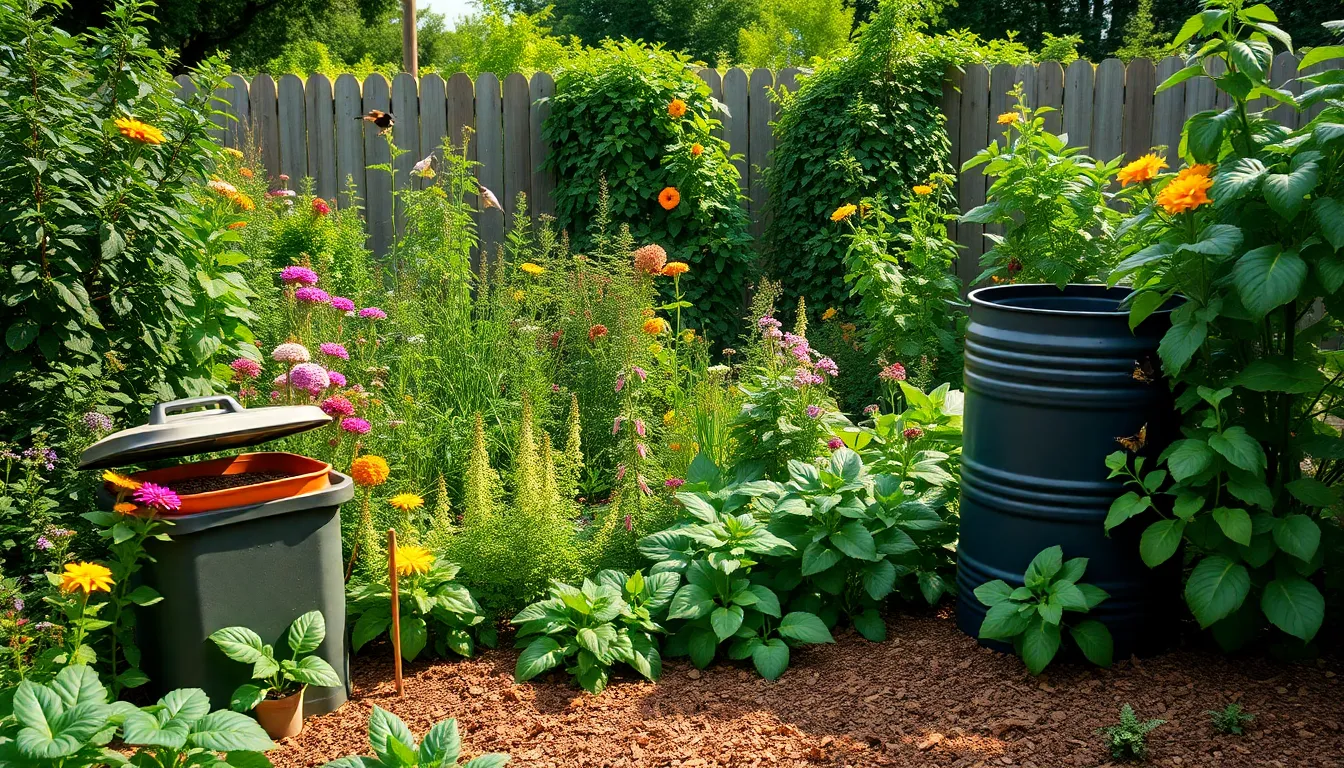Imagine stepping into a lush sanctuary where the fruits of your labor flourish effortlessly, and nature does most of the hard work for you. That’s the beauty of a self sustaining garden. Where gardening meets sustainability, this oasis not only feeds you but also respects the intricate balance of the ecosystem. Whether you’re a seasoned green thumb or just starting out, this guide will arm you with everything you need to cultivate your own thriving paradise. Let’s dig into the dirt and explore how to create a garden that practically runs itself, without the need for a green thumb.
Self Sustaining Gardens

A self sustaining garden is more than just a trendy concept: it’s a lifestyle choice that promotes biodiversity, minimizes waste, and requires little intervention from its gardener. Essentially, these gardens are designed to thrive on their own, using resources like compost, rainwater, and the local ecosystem to flourish without relying heavily on external inputs like fertilizers or pesticides.
In essence, these gardens are living ecosystems. Plants, animals, and microorganisms work in harmony, supporting one another. Perennial plants, which return year after year, form the backbone of these gardens, reducing the need for replanting. The result? A garden that operates much like nature itself, beautiful, resilient, and sustainable.
Benefits of a Self Sustaining Garden
Adopting a self sustaining garden comes with a treasure trove of benefits that extend beyond merely enjoying fresh produce. Let’s take a look at some of the most compelling advantages:
- Reduced Costs: By relying on natural processes, gardeners save on inputs like fertilizers and pesticides. Plus, fewer trips to the store mean more savings.
- Sustainability: These gardens promote a cycle of sustainability. Composting converts kitchen scraps and yard debris into nutrient-rich soil, reducing landfill waste.
- Improved Biodiversity: A varied environment invites a range of beneficial insects and wildlife, which can help pollinate plants and control pests.
- Less Maintenance: Once established, self sustaining gardens require less hands-on involvement. This is perfect for busy individuals who still wish to enjoy the fruits of their labor.
- Health Benefits: How about the satisfaction of eating homegrown veggies? Not only do they taste better, but they’re also free from harmful chemicals.
Key Components of a Self Sustaining Garden
For a self sustaining garden to thrive, certain components are essential. Here’s what he or she needs to consider:
- Soil Health: Healthy soil is the foundation. Compost, mulch, and cover crops all contribute to nutrient-rich dirt that supports robust plant life.
- Diversity of Plants: Variety is the spice of life, or in this case, the spice of the garden. A mix of vegetables, fruits, herbs, and flowers creates a balanced ecosystem.
- Water Management: Rainwater harvesting and permaculture practices help manage water efficiently, reducing reliance on municipal sources.
- Natural Pest Control: Encourage beneficial insects like ladybugs and predatory wasps to keep pest populations in check.
- Companion Planting: Certain plants work wonders together. For example, tomatoes and basil can improve each other’s growth while deterring pests.
Designing Your Self Sustaining Garden
Now that the basics are under her belt, it’s time to jump into designing the garden. Here are some strategies to ensure he or she creates a harmonious and productive space:
- Layout Planning: Consider sun and shade patterns throughout the day to maximize light exposure. Raised beds can be an excellent choice for soil control and drainage.
- Zoning: Create zones for different plant types. Having a herb patch, a vegetable section, and even a flower area can encourage biodiversity.
- Incorporate Water Features: A small pond can create a mini-ecosystem, attracting wildlife like frogs and birds.
- Use Perennials: Integrating perennials reduces the need to replant every year: plus, they provide food faster than annuals.
- Paths and Access: Don’t forget about paths. Ensure easy access for weeding, harvesting, and general maintenance.
Maintaining Your Self Sustaining Garden
While self sustaining gardens require less maintenance, they’re not totally hands-off. Here’s how gardeners can ensure their oasis continues to thrive:
- Monitor Soil Health: Regularly check soil quality. Amend with compost or organic matter to keep nutrient levels high.
- Encourage Wildlife: Create habitats for birds, bees, and other beneficial insects to sustain the ecosystem.
- Prune and Harvest: Stay engaged by pruning plants and harvesting regularly. Rotating crops keeps soil nutrients balanced.
- Weed Control: Keep an eye on weeds: while a few are beneficial, too many can choke out desired plants.
- Seasonal Preparation: Each season presents unique tasks, be it planting, harvesting, or preparing for winter. Staying on top of seasonal changes ensures success.
Common Challenges and Solutions
Like any gardening venture, self sustaining gardens come with their own set of challenges. Here are some common issues and ways to tackle them:
- Pest Infestations: Even in sustainable gardens, pests may become overwhelming. Introducing beneficial insects can create a natural balance.
- Soil Depletion: Over time, soil can lose nutrients. Regular composting and crop rotation help keep it rich.
- Water Shortages: If rainfall is scarce, consider integrating rain barrels or drip irrigation systems to conserve water.
- Unfavorable Weather Conditions: Extreme weather can impact garden health. Utilizing mulch can protect roots and retain moisture.
- Overcrowding: As plants grow, they may compete for space and nutrients. Ensure proper spacing to allow plants to thrive.

